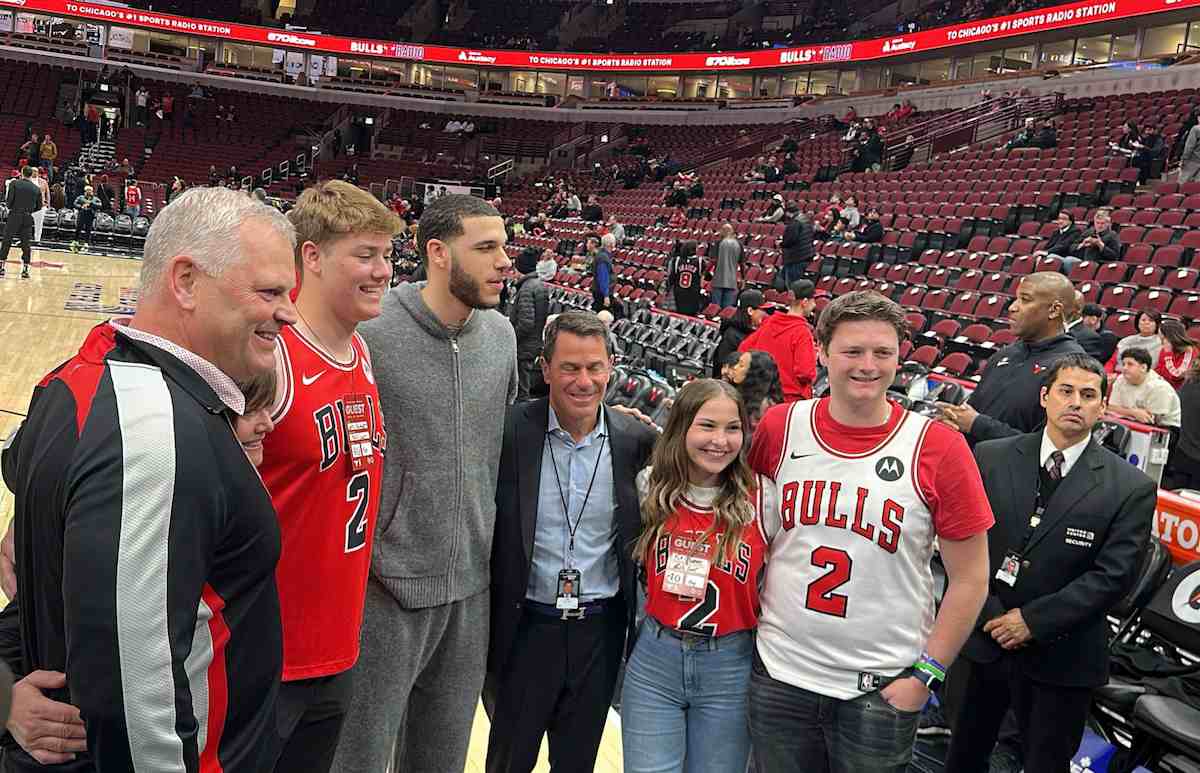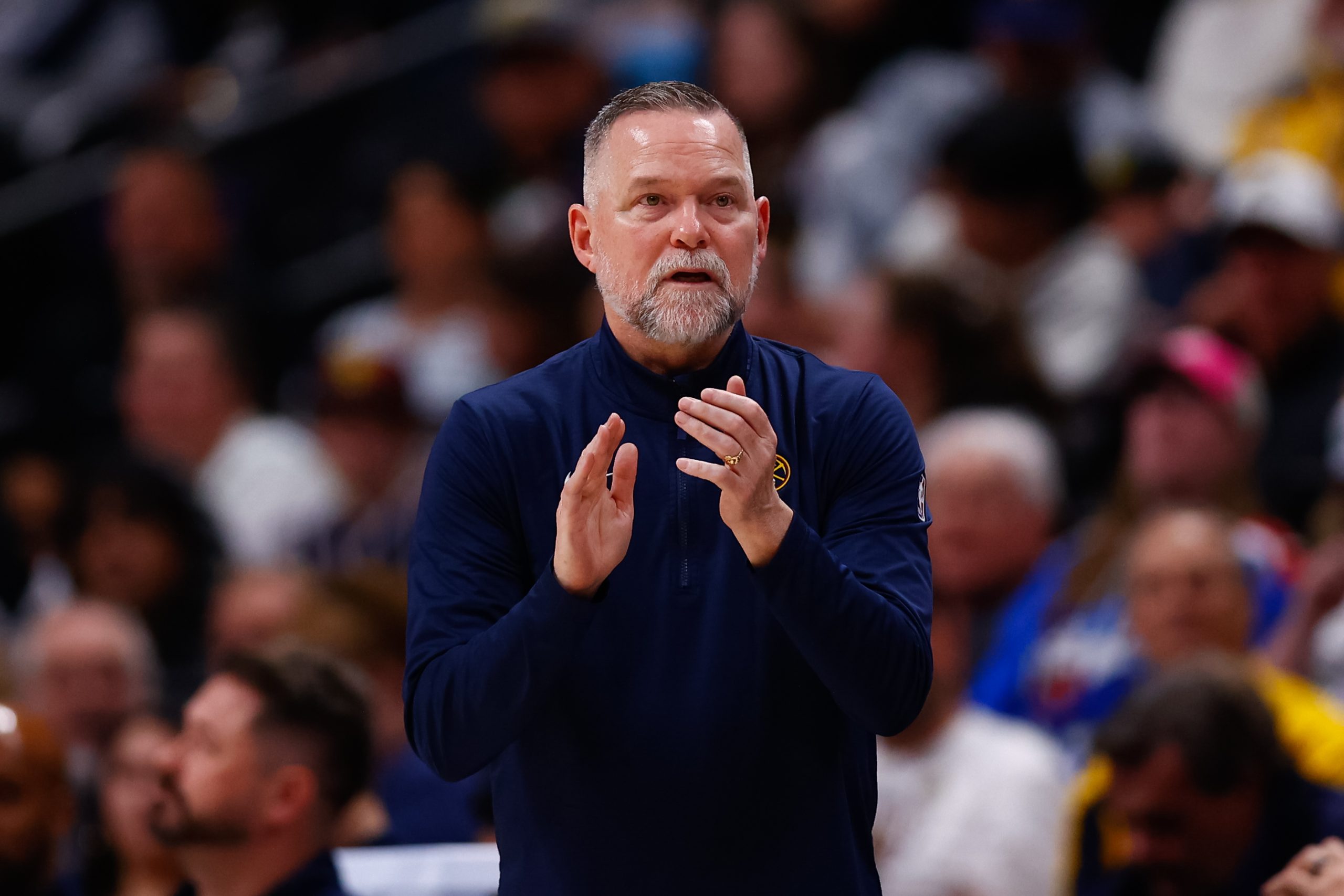Key Highlights
- Through six playoff games, Karl-Anthony Towns is averaging 20.7 points, 9.0 rebounds and 2.3 assists, while shooting 57.1 percent from the floor and 53.8 percent beyond the arc (70.1 percent true shooting)
- He’s being assisted on a career-high 84 percent of his makes, seamlessly taking a backseat to Anthony Edwards
- The Minnesota Timberwolves are 6-0 and two wins from their first Western Conference Finals appearance in 20 years
Late in the fourth quarter of the Minnesota Timberwolves’ Game 4 closeout victory over the Phoenix Suns, the league’s best defense stamped their emphatic sweep with a viral, swarming, 15-second stretch that resulted in a turnover and extinguished Phoenix’s final chance to extend the series. After the takeaway, Anthony Edwards detonated on the rim, Minnesota’s lead grew to four and the Suns never got within a possession again as their season came to a swift close.
That sequence featured many of the familiar faces shepherding the Timberwolves’ premier, sprawling defense: ball pressure from Jaden McDaniels, feisty, yeoman’s post defense from Mike Conley, disciplined, lively rotations from Nickeil Alexander-Walker, a don’t-you-dare closeout from Edwards.
Yet early in the scramble, Karl-Anthony Towns found himself veering toward Eric Gordon, who readied himself on the wing for a go-ahead triple. Instead, Towns impeded his airspace, deterred the three, forced a pass and let the defense settle into its shell. Then, he doubled Kevin Durant and prompted a kickout. Later, he rotated to meet Bradley Beal inside and sparked another pass, which Alexander-Walker snared for the steal.
It was the type of mobility, precision and attentiveness that has helped transform Towns into a viable defender, emblematic of his evolution and the defensive juggernaut Minnesota has become to assert itself as a bona fide title contender.
— Jackson Frank (@jackfrank_jjf) May 8, 2024
What Has Changed For Karl-Anthony Towns?
Through six playoff games, all of which the Timberwolves have won, Towns is averaging 20.7 points, 9.0 rebounds and 2.3 assists. He’s shooting 58.8 percent on twos and 53.8 percent from deep (70.1 percent true shooting). After years of struggling with fouls, turnovers, scoring efficiency or a mix of the three during the postseason, the four-time All-Star is flourishing in these playoffs (even despite some continued foul trouble).
He’s finally found a role best suited for his game to maximize title aspirations, while also gracefully adapting to the changing tides around him. The skill-set that has conjured matchup nightmare labels — versatile shooting, driving, post scoring — is still evident, it’s merely been repurposed with responsibilities free from the burden of constant, complex decision-making, particularly against pressure and double-teams.
Towns is scoring as he always has, but the means to wield all of his tools is simplified. A career-high 84 percent of his field goals are assisted — well above the previous high of 75 percent during the 2017-18 playoffs. His touches per game (46.5) are a career-low and his time of possession (1.7) ties a career-low from his 2015-16 rookie season.
While fouls still ran interference on Towns’ playing time against the Suns, he left an imprint nonetheless and exploited their lack of interior size and bulk, particularly at the 4-spot. Whether it be Durant or Royce O’Neale, he routinely bullied their undersized defenders. He’s done the same when Jamal Murray’s been caught on him in this series.
Because of Rudy Gobert’s presence, Anthony Edwards’ downhill slaloms and the Timberwolves’ tenuous spacing, post touches are a feature, not the lifeblood, of his offense. They open those chances with shrewd positioning of Gobert and by leveraging the threat of his screening, never afraid to flip the court and kickstart second-side actions.
That discretion is to the benefit of Towns and the collective Minnesota attack. Much of his usage begins on the perimeter. Always guarded by a smaller defender and yet to face a team rostering a rangy rim protector, he’s thriving as a slasher.
Per NBA.com, he’s shooting 58.3 percent and scoring 6.2 points per game off of drives, while turning the ball over on just 5.4 percent of them. Over the previous two playoff runs, he turned the ball over on 8.3 percent (2021-22) and 13.3 percent (2022-23) of his drives. In fact, his overall 10.2 percent turnover rate thus far dwarfs the 18.3 percent rate across his initial three playoff appearances.
The likes of Aaron Gordon, Kentavious-Caldwell-Pope, Murray, O’Neale and Durant cannot slow him. They’re too small. There’s not a backstop behind them to muddy Towns’ decision-making or finishing angles. His touch and strength are enjoying the runway to prosper.
At times, Towns’ outside shooting is simply a release valve when teams exceed the occupant limit of Edwards’ orbit. But Minnesota is also diligent enough to dial up calls for him. He’ll waddle around flare screens, usually enforced by Gobert’s hulking frame, or saunter into mismatches, where he cleanly fires over the top. The depth of his shooting is a boon for a rotation largely deprived of such flexibility.
Every opponent the Timberwolves encounter is smaller than them. Aside from Conley (who relishes contact and defense), this is a towering, smash-mouth team primed to not solely be larger, but also be more physical. Often operating in the background, Towns has recognized moments in which the action bends away from him, setting up opportunities to brandish his size advantage as a play-finisher.
He’s not morphed into some clean-up crew member subsisting on putbacks and cuts, but he’s alertly reading the floor to punish imbalances.
The year before Gobert arrived in the Twin Cities was Chris Finch’s first full season as the Timberwolves’ head coach. With Towns still primarily playing center, they elected to deploy him around the level of the screen rather than in drop, where he’d usually sat much of his career. Dane Moore highlighted the ripple effect of that implementation on Minnesota’s backside rotations here, but it also applies to Towns, who was thrust into comfort on the perimeter defensively.
All season, he’s worked to move his feet as a 4-man, rotate in the gaps and offer help in the lane. He’s fought to stay connected on closeouts and contain the ball in space. This is the best defensive campaign of his nine-year career. They’re dividends fostered in 2021-22 now illuminated on a historically good defense. The playoffs have been a continuation of that for Towns.
Look at him move those puppies, man. He underwent meniscus surgery on March 12 and returned to play April 12!
The acquisition of Gobert — a generational defender dropped into an environment where everyone is built to amplify his brilliance — and Edwards’ ascent — headlined by a gregarious grin and an intrepid approach — are fueling Minnesota’s rise.
But none of this happens without Towns. The triumphs of these Timberwolves are as much about him as they are about anyone else in the organization. His willingness to be a secondary star and facilitate the growth of his successor. His willingness to switch positions seven seasons in and embrace all that brings with it on both ends. His willingness to try winning on different, unfamiliar, heightened terms.
So, as Minnesota marches forward, with Edwards’ turbocharged stardom defining offensive possessions and Gobert’s looming, lively limbs defining defensive possessions, Towns will be nearby. He’ll splash threes off a timely swing passes from Edwards. He’ll maul through mismatches on the block for the bucket. He’ll dance on the perimeter to avoid overextending the Frenchman’s services and letting everyone stay home.
He’ll be winning games on different, increasingly familiar terms and helping usher in a new era of Timberwolves basketball — both for himself and the entire franchise.





